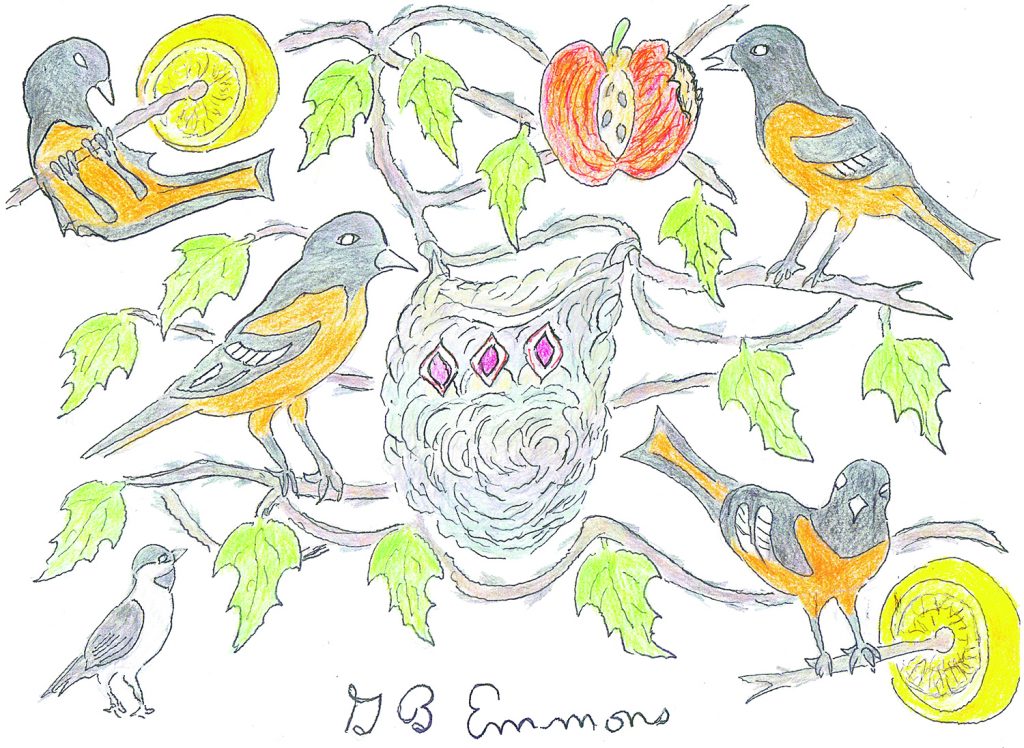With the spring gathering of migratory Baltimore orioles to their breeding grounds from Central and South America, one can find them high in deciduous leafy tree tops, but not in deep forests. They instead prefer the edges of urban groves, well adapted to proximity to human settlement.
After both the spring and fall arduous migration, nectar and fruit comprise most of their diet. The sugary content readily converts into fat, which replaces the energy burned up during migration. To attract orioles to build a nest near your house, oranges and apples may be skewered on the fork of tree branches to satisfy their craving for re-vitalized nourishment, as I have shown in my illustration.
Baltimore oriole populations have been declining throughout their range, for the most part, of this country and Canada. According to the North American Breeding Bird Survey, the Official Partners In Flight Survey shows a loss of three percent each year. This accumulates to a loss of twenty-four percent from the year 1966 to the year 2000. With the subsequent breeding population estimated at 12 million, the decline puts them halfway down the list to number ten out of twenty species of concern.
The main causes of diminishment are attributed to widespread deforestation and habitat loss.
Individual interested birdwatchers can help by supplying that supplementary diet of fruits near or on their property. Other oriole attracters are actual oriole feeders with sugar and water, like nectar, or open jars of jelly and peanut butter. Natural plantings around the yard of bright colored fruit like raspberries, crabapples, and trumpet vines are a sure attraction for the birds passing by. The reward for this effort might be the glimpse of a female building a sock-like hanging nest.
The remarkable next-building process begins with the gathering together of slender fibers. She anchors her nest by hanging long fibers over a small supporting branch on either side. With this as a start, she collects a combination of grass, thin strips of grapevine bark, and loose horsehair. She then pokes and darts her bill in and out to tangle the loose hank. While no knots are tied, random placement has somehow made knot-like tangles with an opening of five inches wide on the top and usually six inches across.
The inside of the deep sack in which she lays her eggs may be lined with artificial fibers such as cellophane, twine, fishing line, or recycled fibers from a recent nest. This entire process takes about a week. Then, when her eggs are laid in the bottom of the sack, they will hatch about two weeks later. This is the only reproduction of the season.
When you hear the joyous juveniles chirping and clamoring to attract food from either parent, you will feel the satisfaction of having played even just a small part in this successful life cycle. Not only that, but in your own back yard you will have witnessed one of those critical environmental reversals of a vanishing species and the glory in a happy treetop cloister of Baltimore orioles.
By George B. Emmons

Orioles once built their pendant nests in the pendant bows of the ubiquitous American Elm. Could the loss of American Elms as an ideal nesting tree be a significant factor in the decline of the oriole population?
Looks like you hit the nail on the head